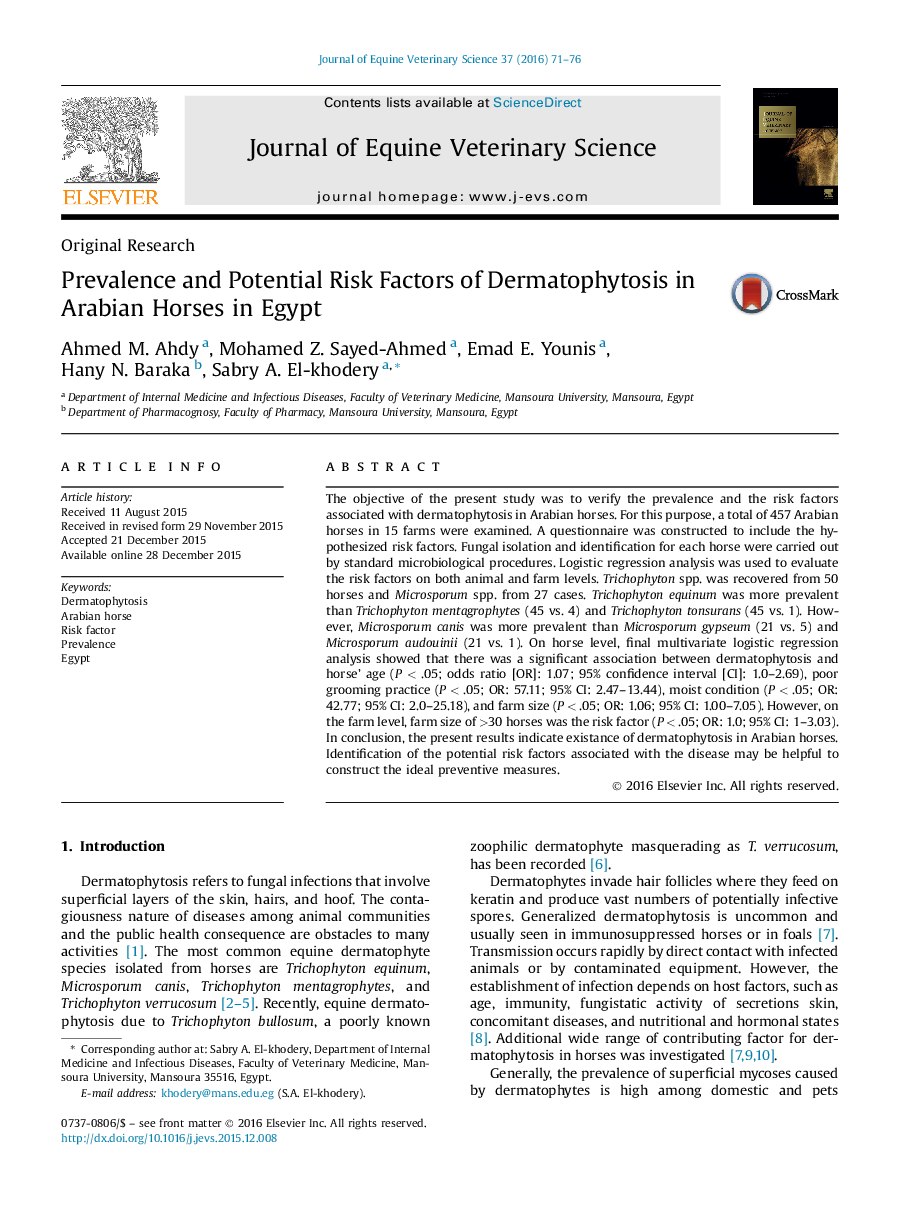| Article ID | Journal | Published Year | Pages | File Type |
|---|---|---|---|---|
| 2394709 | Journal of Equine Veterinary Science | 2016 | 6 Pages |
Abstract
The objective of the present study was to verify the prevalence and the risk factors associated with dermatophytosis in Arabian horses. For this purpose, a total of 457 Arabian horses in 15 farms were examined. A questionnaire was constructed to include the hypothesized risk factors. Fungal isolation and identification for each horse were carried out by standard microbiological procedures. Logistic regression analysis was used to evaluate the risk factors on both animal and farm levels. Trichophyton spp. was recovered from 50 horses and Microsporum spp. from 27 cases. Trichophyton equinum was more prevalent than Trichophyton mentagrophytes (45 vs. 4) and Trichophyton tonsurans (45 vs. 1). However, Microsporum canis was more prevalent than Microsporum gypseum (21 vs. 5) and Microsporum audouinii (21 vs. 1). On horse level, final multivariate logistic regression analysis showed that there was a significant association between dermatophytosis and horse' age (P < .05; odds ratio [OR]: 1.07; 95% confidence interval [CI]: 1.0-2.69), poor grooming practice (P < .05; OR: 57.11; 95% CI: 2.47-13.44), moist condition (P < .05; OR: 42.77; 95% CI: 2.0-25.18), and farm size (P < .05; OR: 1.06; 95% CI: 1.00-7.05). However, on the farm level, farm size of >30 horses was the risk factor (P < .05; OR: 1.0; 95% CI: 1-3.03). In conclusion, the present results indicate existance of dermatophytosis in Arabian horses. Identification of the potential risk factors associated with the disease may be helpful to construct the ideal preventive measures.
Related Topics
Life Sciences
Agricultural and Biological Sciences
Animal Science and Zoology
Authors
Ahmed M. Ahdy, Mohamed Z. Sayed-Ahmed, Emad E. Younis, Hany N. Baraka, Sabry A. El-khodery,
